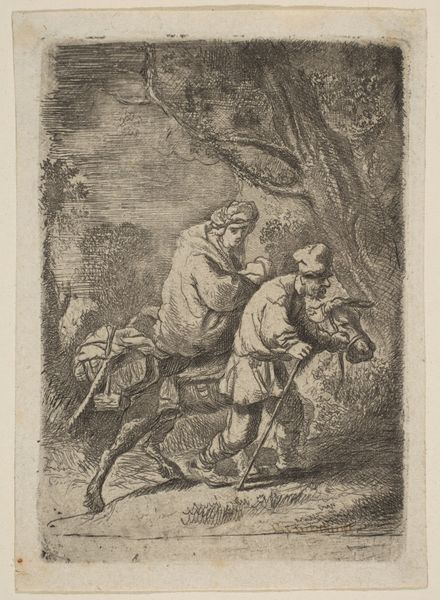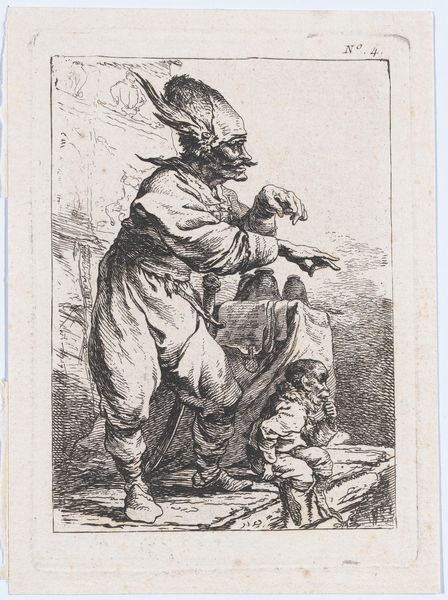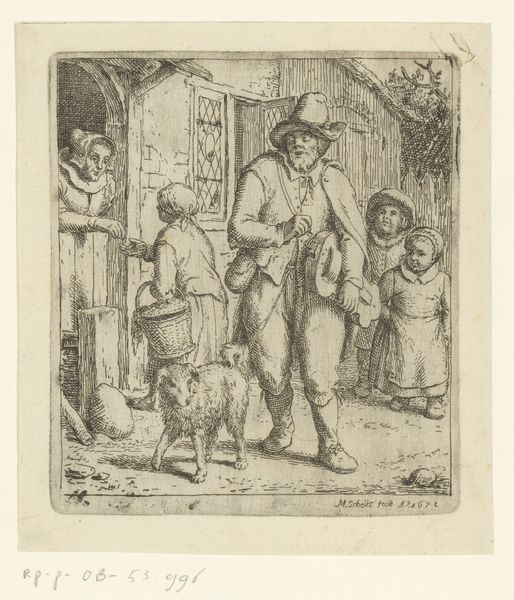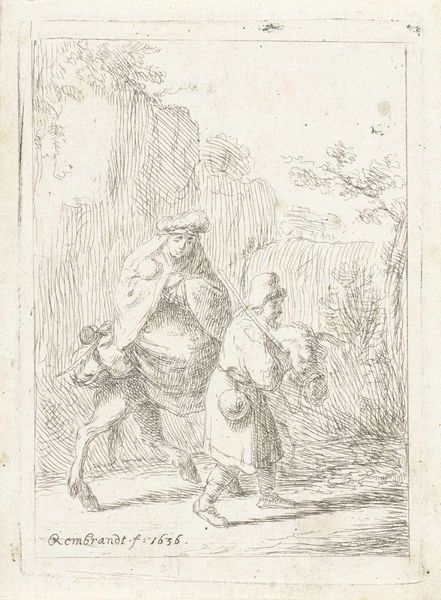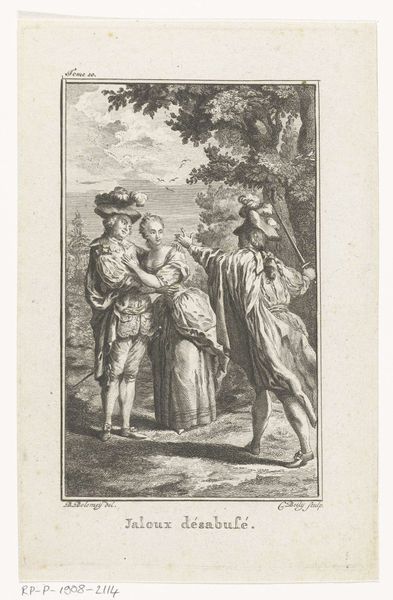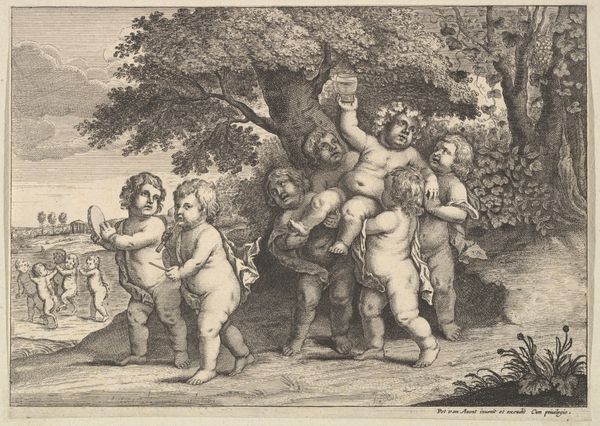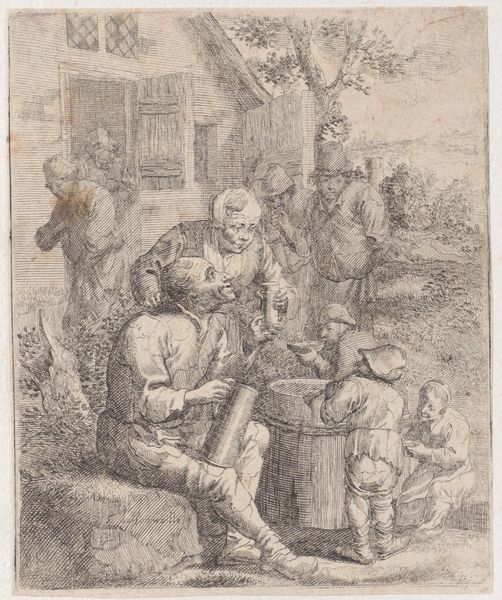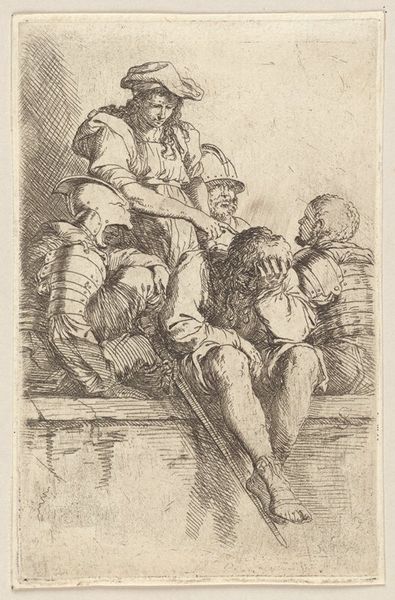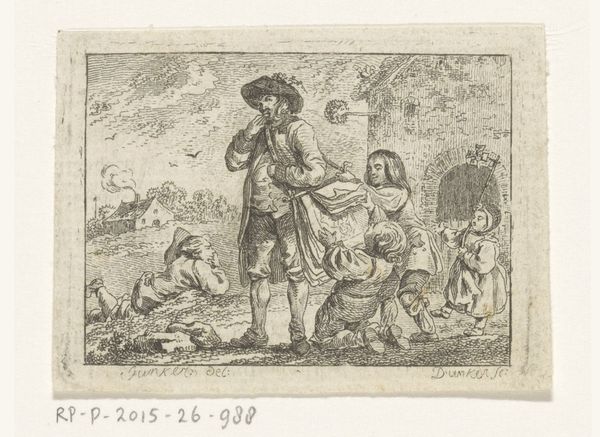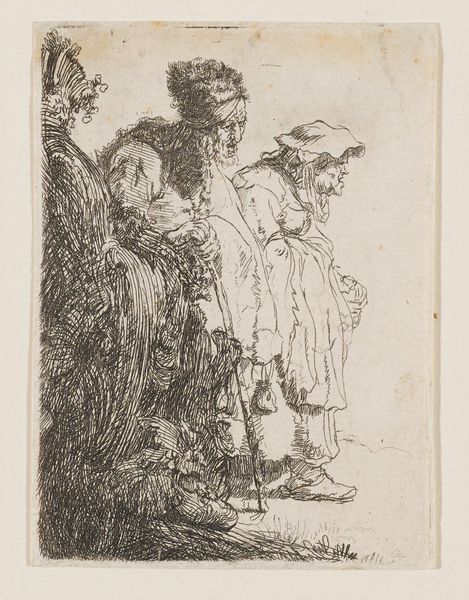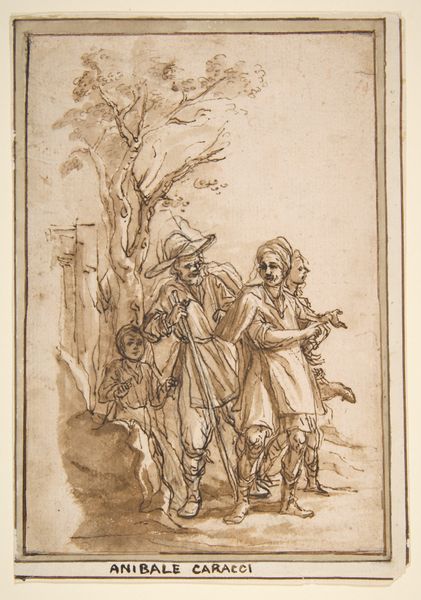
print, etching
#
narrative-art
#
dutch-golden-age
# print
#
etching
#
landscape
#
genre-painting
Dimensions: height 145 mm, width 121 mm
Copyright: Rijks Museum: Open Domain
Editor: We’re looking at Matthias Scheits’ "Doedelzakspeler" from 1672, created as an etching. It feels very folksy; the textures are rough, but it has an interesting flow to it. What do you see in this print? Curator: Let's analyze the formal qualities. Observe the artist's calculated use of line. Notice how the density of etched lines defines form and volume, particularly on the bagpipes. The cross-hatching technique, evident in the figure’s clothing, provides depth. How does this interplay of line and shadow contribute to the overall composition? Editor: It seems like he's focusing our attention on the musician as a subject, by adding the shadows. But I think he’s not as detailed compared to other Dutch Golden Age works I have seen. Is this common in this kind of work? Curator: The focus isn't on perfect representation. Instead, the composition prioritizes rhythmic patterns and contrast. Look at the dynamic diagonals formed by the bagpipes, juxtaposed with the more static horizontal lines of the buildings in the background. How does this formal arrangement affect the visual impact of the piece? Editor: It creates an interesting sense of movement. The diagonals really do pull my eyes towards the musician, who seems to be leading a parade. But does the work’s reliance on these basic compositions undermine it in any way? Curator: Not necessarily. One could argue that this simplicity enables greater emphasis on the interplay between line, texture, and form. This abstraction serves as its own language. Perhaps a precursor to the formal experimentations of later movements. What do you think we can take from this work? Editor: It definitely made me rethink the possibilities within "simplicity". I focused a lot on detailed accuracy and less on overall compositional interest in art. Curator: I’ve found myself focusing more on line and composition. This piece showed me the beauty of fundamental artistic elements in the visual reading experience.
Comments
No comments
Be the first to comment and join the conversation on the ultimate creative platform.
